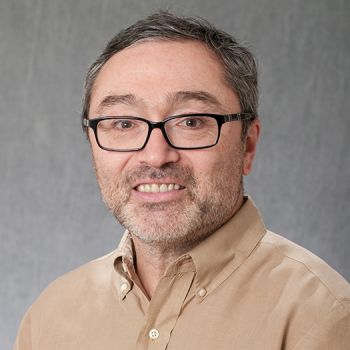Research
Dr. Bukrinsky's research focus is on HIV biology and inflammatory diseases. The following projects are pursued: i) analysis of cholesterol metabolism in HIV-infected cells; ii) design and analysis of anti-HIV compounds; iii) analysis of molecular mechanisms of HIV-1 translocation from the cytoplasm into the nucleus of infected cells; iv) studies on the role of a new pro-inflammatory factor discovered by Dr. Bukrinsky - extracellular cyclophilin - in inflammatory disease pathogenesis; v) studies of HIV infection of macrophages. Dr. Bukrinsky is also actively involved in education activities, including international programs with Russia and Australia.
For more information, please visit the Bukrinsky Lab website.
Morrow MP, Grant A, Mujawar Z, Dubrovsky L, Pushkarsky T, Kiselyeva Y, Jennelle L, Mukhamedova N, Remaley AT, Kashanchi F, Sviridov D, Bukrinsky M. (2010). Stimulation of the liver X receptor pathway inhibits HIV-1 replication via induction of ATP-binding cassette transporter A1. Mol Pharmacol. 78:215-225.
Levin A, Loyter A, Bukrinsky M. (2010). Strategies to inhibit viral protein nuclear import: HIV-1 as a target. Biochim Biophys Acta In press.
Crowe SM, Westhorpe CL, Mukhamedova N, Jaworowski A, Sviridov D, Bukrinsky M. (2009). The macrophage: the intersection between HIV infection and atherosclerosis. J Leukoc Biol. 87:589-598.
Iordanskiy S, Berro R, Altieri M, Kashanchi F, and Bukrinsky M. (2006). Intracytoplasmic maturation of the human immunodeficiency virus type 1 reverse transcription complexes determines their capacity to integrate into chromatin. Retrovirology 3:4.
Mujawar Z, Rose H, Morrow MP, Pushkarsky T, Dubrovsky L, Mukhamedova N, Fu Y, Dart A, Orenstein JM, Bobryshev YV, Bukrinsky M*, and Sviridov D (2006). Human immunodeficiency virus impairs reverse cholesterol transport from macrophages. PLoS Biol. 4:e365.
Haffar O, Dubrovsky L, Lowe R, Berro R, Kashanchi F, Godden J, Vanpouille C, Bajorath J, and Bukrinsky M (2005). Oxadiazols: a new class of rationally designed anti-HIV compounds targeting nuclear localization signal of the viral matrix protein. J. Virol. 79:13028-13036.
Yurchenko V., Zybarth G., O'Connor M., Dai W.W., Franchin G., Hao T., Guo H, Hung H.-C., Toole B., Gallay P., Sherry B., and Bukrinsky M. (2002). Active-site residues of cyclophilin A are crucial for its signaling activity via CD147. J. Biol. Chem. 277:22959-22965.
Popov S., Rexach M., Zybarth G., Reiling N., Lee M.-A., Ratner L., Lane C.M., Moore M.S., Blobel G., and Bukrinsky M.I. (1998). Viral protein R regulates nuclear import of the HIV-1 pre-integration complex. EMBO J. 17:909-917
Schmidtmayerova H., Sherry B., and Bukrinsky M. (1996). Differential effect of bï€ chemokines on HIV-1 replication in T lymphocytes and macrophages. Nature 382:767.
Bukrinsky M.I., Nottet H.S.L.M., Schmidtmayerova H., Dubrovsky L., Flanagan C.R., Mullins M.E., Lipton S.A., and Gendelman H.E. (1995). Regulation of nitric oxide synthase activity in HIV-1 monocytes: Implications for HlV-associated neurological diseases. J. Exp. Med. 181:735-745.

